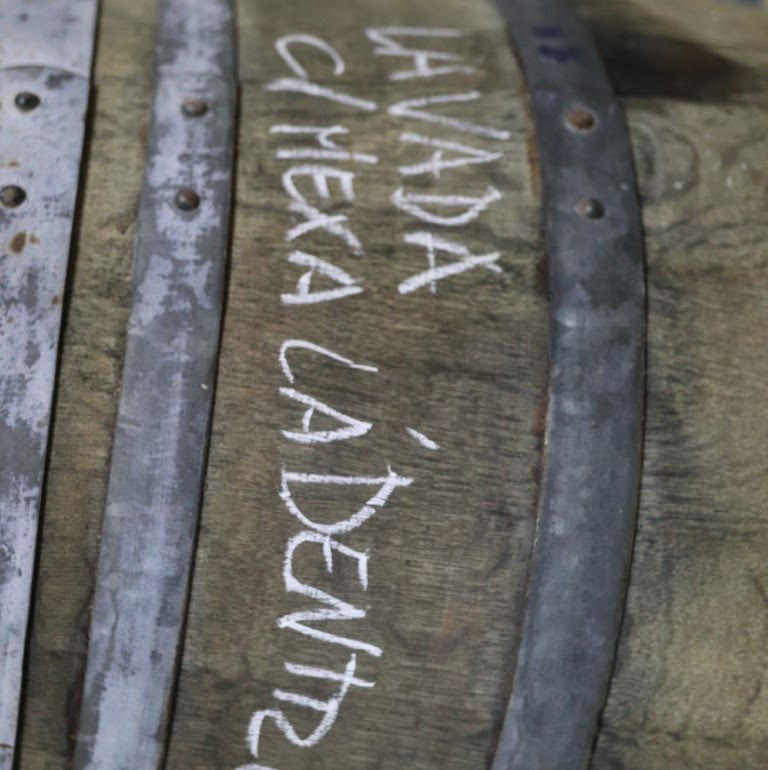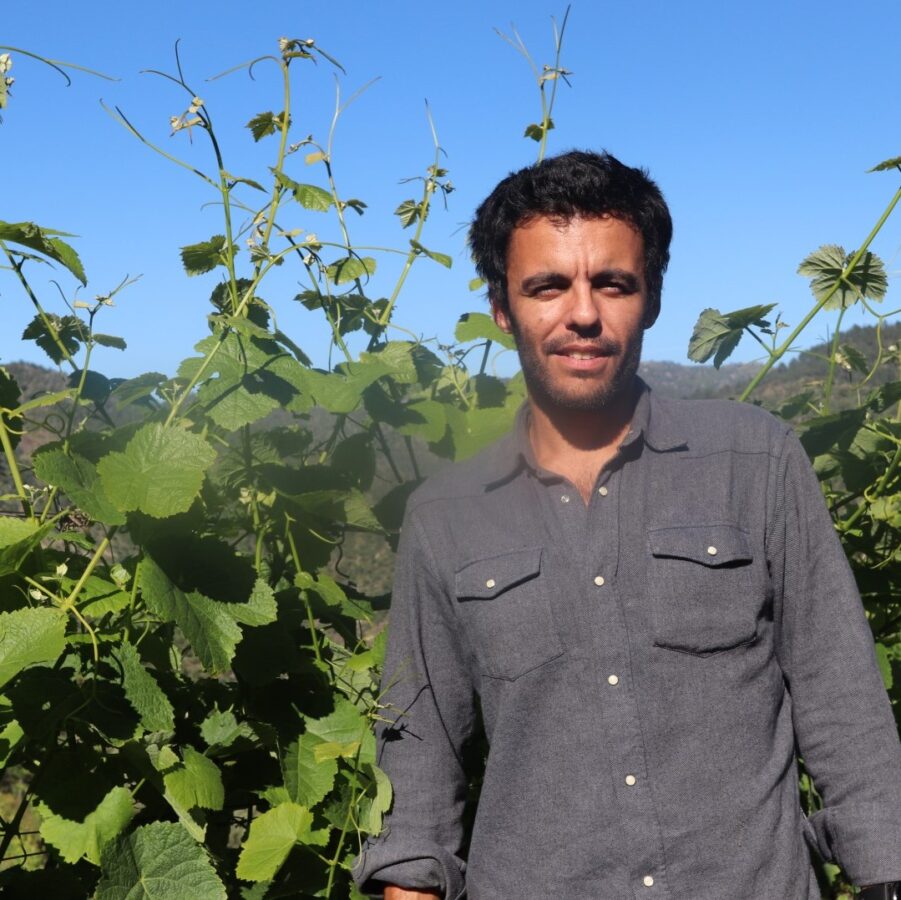Good morning, bacchorists
During the month of March, we will highlight Italian reds with their noble tannins!
On Monday 25th March, we’ll have a tasting-debate on wines without added sulphites, with the producers Humus and Vila Rachel.
We had the arrival of new wines from various producers:
Adega Reg. De Colares | Lisboa | Colares
Tiago Teles | Lisboa
Vítor Claro – Dominó | Alentejo
Tiago Teles | Vinho Verde
Nanclares y Prieto | Galicia
Henri Germain | Bourgogne
Le Pech d’André | Languedoc
We leave you our updated wine list, our producer’s portfolio and below, the wines that have sold out and will be missed.
In the wine list we’ve marked the wines that are in their final bottles!
Our Ali BáBá cave is waiting for you!
Good wishes for the week
Goliardic salutations,
The team
Nadir, Sílvia, França, Alessandro, Miguel and André!
TASTING-DEBATE OF THE MONTH – Wines without added sulphites



With Tiago Cartageno from Quinta Vila Rachel in Douro and Rodrigo Filipe from Encosta da Quinta, in Lisbon
Monday 25 March at 5pm
Os Goliardos garage, Rua General Taborda 91, Campolide
Sulphites have been added to wine-making processes since ancient times as a preservative, due to their antioxidant and antibacterial properties. It has a fixing effect that in excess can petrify the wine, preventing it from evolving. We also know that it is largely responsible for headaches the next day and that there are people who are allergic to sulphites, which is why at the beginning of the new millennium it became compulsory to state whether or not the wine contains sulphites. Perhaps because it was the only compulsory labelling apart from the alcohol level, it became a subject of strong debate, creating anti-sulphite and sulphite-friendly movements. Curiously, sulphites are used in so many food products, such as nuts, jams, fruit juices and various preserves, but they go unnoticed by the staunch defenders of the various movements. It should also be remembered that naturally fermenting must in an anaerobic situation (deprived of oxygen) produces sulphites, and as such, even wines without added sulphites often contain sulphites in low quantities.
And what is the impact of adding or not adding sulphites on the taste of a wine? What are the arguments for adding or not adding sulphites, but above all in what quantities, and many more questions arise: in what form is it added? When is it added?
We know that wines without added sulphites are theoretically more unprotected from oxidative or bacterial phenomena, and therefore more likely to create volatile acidity and develop some instability (some microorganisms). For this reason, making wines without added sulphites that preserve identity is a challenge that is not for everyone nor anywhere. It requires high quality grapes, very careful and rigorous winemaking and in-depth knowledge of the terroir. For this reason, the fashionable terminology of minimal intervention wines seems to us to overlook the complexity of the process.
To fuel the debate, we invited two Portuguese producers who make wines without added sulphur dioxide to find out their motivations and questions. There are very few in Portugal who do this, and Tiago and Rodrigo already have some experience of these practices.
Join us for this de-tasting-bate!

Tasting with reserved seating, 20€/person paid by mbway or transfer
For those taking part in the tasting and on the day of the tasting, all the wines from the producers at the tasting will have a 20% discount off the aficionados’ list
Mandatory reservation to golias.goliardos@gmail.com
In the event of cancellation, please notify us 24 hours in advance. Otherwise, the amount cannot be refunded.
HIGHLIGHT OF THE MONTH – Italian reds, long live the good tannins!

During the month of March, we’ll be highlighting Italian reds with their noble tannins!

Tannins tannins
For those who want to master the great family of polyphenols, an immersion in Italy is the unavoidable pilgrimage to confront your palate to the fire test of tannins and make you wiser about all the nuances of astringency that macerated red or white wine can provide. We can also study tannins through tea or persimmon. In Japan, astringency signifies a discreet beauty, a distinguished person who reveals a deep and serene nuance.
Tannins are extracted from the skin and pips of the grapes, as well as from the stalk of the bunch if it is used in maceration. It’s important to distinguish between condensed tannins, which come from the grapes and the bunch, and gallic tannins, which come from the wood in which the wine is aged, not to mention oenological tannins that are added in powder form.
Tannins contribute decisively to the structure and longevity of wines, provided they are ripe and stable, giving the wine energy and complexity. The moderate oxygenation of wines through wooden containers softens the astringency of youth and makes the wine rounder and more harmonious.
Phenolic compounds or polyphenols are the molecular supports of wine’s main organoleptic properties. More present in reds than whites, they are found in large quantities in tannins (1 to 3 g/l), anthocyanins (reddish pigments) and flavones (yellow colouring matter present in whites). Phenolic compounds (phenolic acids, phenolic alcohols, phenolic aldehydes, anthocyanins, flavonols, tannins) play a decisive role in the colour, astringency and aromatic composition of a wine.

The producers
We have 22 producers in the spotlight, with a wide selection of wines on offer with levitating tannins:
Piemonte | Bera
Piemonte | Braccia Rese
Piemonte | Cascina Corte
Piemonte | Cascina delle Rose
Piemonte | Fenocchio
Piemonte | Piero Benevell
Piemonte | Valli Unite
Piemonte | Valpane
Toscana | Castell’in Villa
Toscana | Cigliano di Sopra
Toscana | Fonterenza
Toscana | La Stesa
Toscana | Marchionni
Friuli | Radikon
Friuli | Skerk
Friuli | Skerlj
Liguria | Santa Caterina
Marche | La Distesa
Campania | Cantina Giardino
Sicilia | Barraco Nino
Sicilia | Masseria del Pino

New wines on the list
Adega Reg. De Colares | Lisboa | Colares
B | Arenae Malvasia 50cl | 2021 | 28,25
Tiago Teles | Lisboa
T | Raíz Tinto | 2022 | 16,25
Vítor Claro – Dominó | Alentejo
B | Monte Pratas | 2022 | 16,75
T | Salão Frio | 2022 | 16,75
Tiago Teles | Vinho Verde
B | Raíz Branco | 2022 | 16,25
Nanclares y Prieto | Galicia
B | Dandelion | 2022 | 17,0
Henri Germain | Bourgogne
B | Bourgogne Blanc | 2021 | 32,75
B | Meursault | 2021 | 56,5
Le Pech d’André | Languedoc
B | La Rivière Blanche | 2023 | 12,0
T | Lazuli | 2023 | 15,5
V | L’Or des Draines 50cl | 2014 | 15,25
Sold out…Snif snif
Vítor Claro – Dominó | Alentejo | T | Foxtrot | 2021
Quinta das Bágeiras | Bairrada | B | Colheita branco | 2022
Mateus Nicolau de Almeida | Douro | B | Kappa | 2022
Quinta do Romeu | Douro | T | Atelier Palhete | 2022
Fedellos do Couto – Peixes | Galicia | T | Peixe da Estrada | 2020
Fedellos do Couto – Peixes | Galicia | T | Os Bidueiros (Sumoll, Mencia, Garnacha tint.) | 2018
Henri Germain | Bourgogne | B | Meursault | 2020
La Cadette | Bourgogne | B | Melon de Bourgogne | 2022
La Petite Empreinte | Bourgogne | T | Tapis rouge | 2022
Valette Philippe | Bourgogne | B | Mâcon Chaintré | 2019
Butin Philippe | Jura | V | Vin de paille 37,5 cl | 2016
Majas | Roussillon | B | Chardonnay | 2022
Matassa | Roussillon | B | Marguerite | 2022
Tribouley Jean-Louis | Roussillon | T | Elepolypossum | 2021
Clos Siguier | Sud-ouest | T | Vieilles Vignes (Malbec) | 2019
Clos Thou | Sud-ouest | V | Suprême de Thou | 2011
Farrugia Sandrine | Sud-ouest | B | 52 Ares | 2021
Le Roc | Sud-ouest | R | Ninette rosé | 2022
Le Roc | Sud-ouest | T | Les petits cailloux du Roc | 2020
Skerk | Friuli | BM | Vitovska | 2020
Castell’in Villa | Toscana | T | Riserva | 2005
Heinrich | Burgenland | T | Zweigelt | 2018
Heinrich | Burgenland | T | St Laurent | 2020
Vetter Stefan | Franken | T | Spatburgunder Steinterrassen | 2019
Busch Clemens | Mosel | B | Riesling (alter)native | 2022
Dalamara | Naoussa | T | Naoussa | 2020